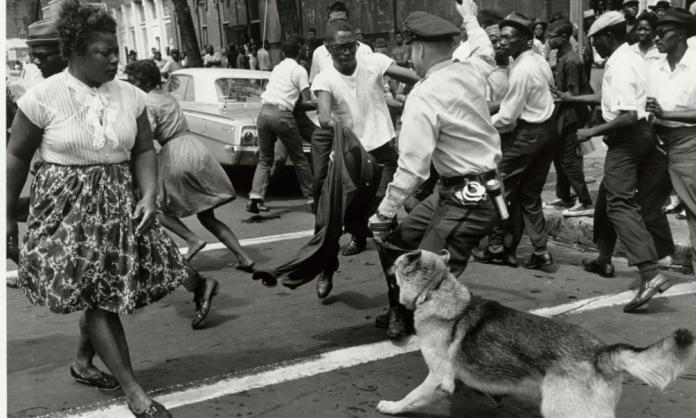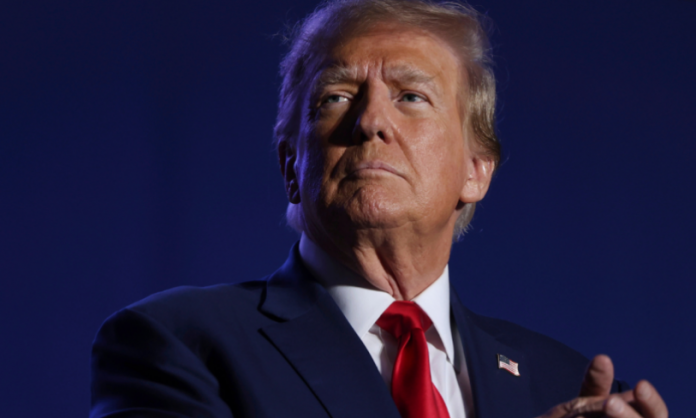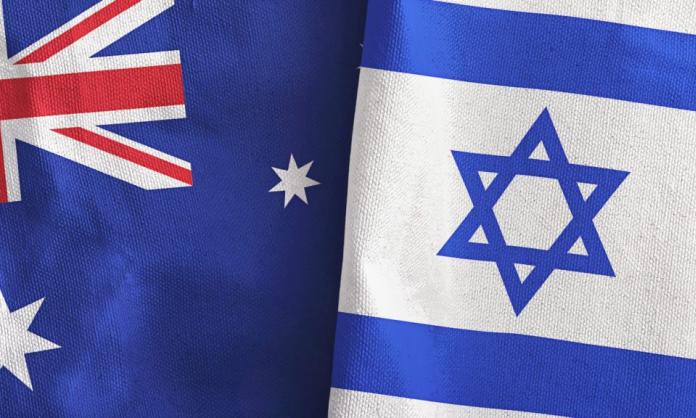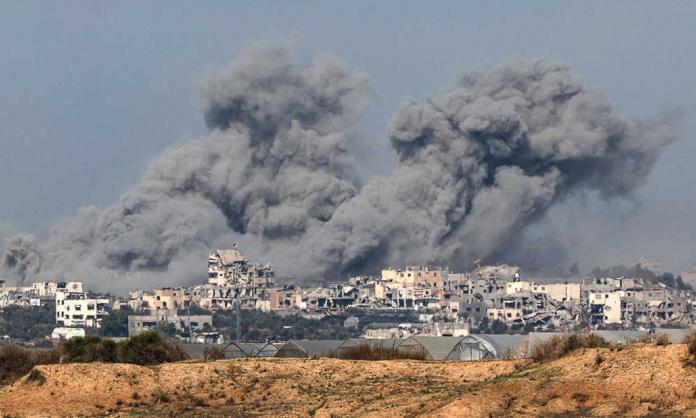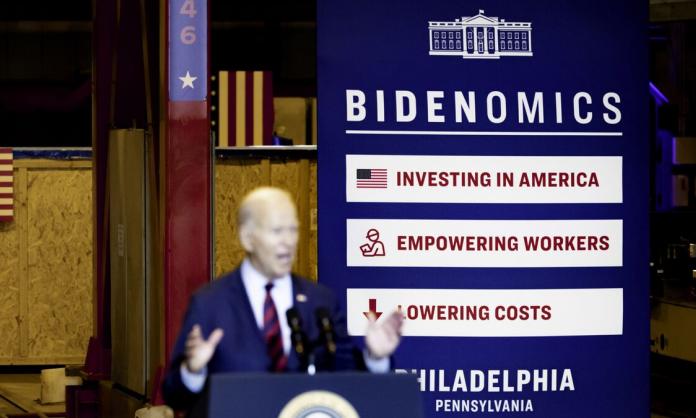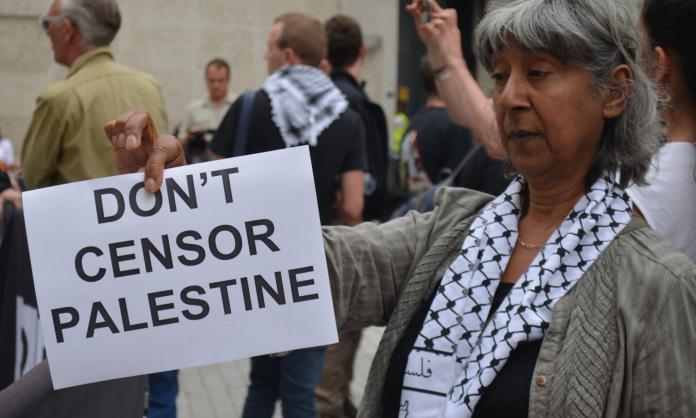The United States this year was rocked by the biggest mass rebellion in its history. Black Lives Matter protests ripped through more than 2,000 different towns and cities, attracting millions of people in a multiracial rebellion that changed the political landscape. Many have had their first experience of protesting; marching and chanting alongside thousands of others, united on the streets. Some have become political leaders, carrying crowds of thousands with chants against Trump and the police, storming barricades erected to protect statues glorifying the country’s racist history and participating in meetings to organise rolling protests. This new generation of rebels has also inspired people around the world, spreading mass anti-racist protests to London, Seoul, Sydney and beyond.
But the energy unleashed by the rebellion starting in May is being swamped by the electoral circus of Biden vs. Trump. This is bad news for anyone hoping to see transformative change in the US—or in other parts of the world, for the reach of US politics is truly global. Socialists have always argued that the way we fight for our rights is through mass demonstrations, strikes and activism, not pinning hopes on bourgeois elections. This is particularly the case in the United States, where politics is dominated by two giant parties of the business class. Collective resistance affects the consciousness of protesters in a way unrivalled by the atomising experience of the ballot box. “Rehearsals for revolution”, is how British socialist activist and art critic John Berger described the character of mass demonstrations, “not strategic or even tactical ones, but rehearsals of revolutionary awareness”.
Mass demonstrations don’t just change the political consciousness of those who attend; they are also, along with strikes, the most effective way we have to force progressive change from politicians. With the presidential election just weeks away, the left in the US is faced with a choice: to campaign and vote, however reluctantly, for a Biden presidency, or to try to harness the radical energy and spread the struggles of 2020, while rebuilding new layers of revolutionary political leadership and organisation. Some argue the two things are not counterposed. But the history of US politics teaches us that the circus of the election cycle sucks the wind out of mass movements instead of inflating them.
The radical struggles of the 1930s and 1960s, when workers and the oppressed won their greatest victories, are testament to this. The Great Depression is remembered by liberals of all stripes as the time when Democratic President Franklin D. Roosevelt took on the industrialists to fight for the livelihoods of impoverished workers. While Roosevelt did at times clash with sections of capital over the most effective strategy to restore profitability, legislated reforms were a product of and response to the greatest upsurge of labour militancy in the twentieth century.
Three mass strikes in 1934 won union recognition and wage rises in Toledo, Minneapolis and San Francisco, inspiring a nationwide upswing in working-class militancy. This was the backdrop to the president’s second New Deal in 1935-36, which contained more concessions to workers than the first New Deal of 1933-34. For example, the National Labor Relations Act made it illegal for employers to refuse to bargain with unions, and the Social Security Act provided economic support for the most impoverished workers and the elderly.
Although Roosevelt promised workers during his re-election bid in 1936 that “we have only just begun to fight”, 1935 proved to be the high watermark of reforms under his administrations. While many workers caught up in waves of industrial rebellion began to move beyond Democratic Party politics, their union leaders and the Communist Party pulled out every stop to divert working-class energy into Roosevelt’s re-election campaign. This squandered a historic opportunity to build a mass workers’ party in opposition to the two dominant parties of American capitalism.
Thirty years later, during the 1964 presidential elections, voters were presented with two undesirable choices. Barry Goldwater, arch-reactionary and warmonger, stood for the Republicans. Lyndon B. Johnson, who had already been in office for a year and started the military build-up in Vietnam but promised not to escalate it, ran as the Democratic nominee. Large sections of the peace movement and the left decided to go “half the way with LBJ”—a slogan reminiscent of today’s “settle for Biden”—pledging to vote and campaign for Johnson as the lesser evil to Goldwater. However, almost immediately on retaking office, Johnson escalated the war, which by its conclusion had slaughtered more than 3 million people.
Heroic resistance from Vietnamese soldiers and civilians dovetailed with a rebellion in the army and a mass protest movement in the US. The Tet Offensive in 1968, a major escalation by the Vietnamese resistance, brought the National Liberation Front into the heart of Saigon, the capital of the occupied south of the country. The uprising spread to dozens of other towns controlled by US forces and the South Vietnamese puppet regime. While the US military eventually stopped the offensive, it marked a crucial turning point for the fortunes of US imperialism in Vietnam.
In the United States, the anti-war movement began drawing crowds of hundreds of thousands. When President Nixon announced the invasion of Cambodia in 1970, students at more than 100 campuses went on strike. After four student activists were shot and killed by the National Guard at Kent State University, the strike spread to more than 400 colleges. A generation was becoming radicalised and mobilised. But the nail in the coffin for Nixon’s strategy was the resistance of the soldiers stationed in Vietnam. Individual and collective acts of disobedience, often led by soldiers radicalised back home, led the army towards a state of collapse. And so the war was defeated by collective, mass resistance in the US and Vietnam.
The power of movements on the streets and in workplaces is also evident in more recent times. In 2006, when a Republican bill to criminalise undocumented migrants passed the House and moved to the Senate, more than a million people left their workplaces and flooded the streets in a mass action called “A day without an immigrant”. In the lead-up to a May Day strike, there were rallies of hundreds of thousands of migrant workers, students and anti-racist activists, which built formidable resistance to the legislation. Following the strike, the bill was a dead letter.
Much of the organisational energy that had gone into building the movement turned its focus to the midterm elections and then the 2008 presidential election, captured by the popular slogan “Today, we march; tomorrow, we vote”. The hopes of millions of harassed and oppressed immigrants were pinned on a presidential victory for Barack Obama. But after being elected on a pro-immigrant platform, he soon became the “deporter in chief”—kicking out more undocumented immigrants than all preceding presidents combined.
In 2018, teachers in West Virginia, the safest Republican state in the country, inspired workers across the US when a planned two-day strike demanding a 5 percent pay increase for all state public sector workers blew out to eight days of wildcat strikes. State senators tried to demonise the teachers as selfish and sabotaging children’s education. Negotiators tried to buy off the teachers at the expense of other state workers with an industry-specific wage rise. But thousands of teachers kept fighting until their demand was met, with the exuberant support of their pupils and the wider public.
This was a massive victory won in a state with a Republican governor, state Senate president and House majority leader. Over the following three months, teachers in Oklahoma, Kentucky, North Carolina, Colorado and Arizona followed suit, walking out of the classroom and winning victories for pay and school funding. Public sector pay has been backsliding for decades across the US under both Republican and Democratic governors; pay rises became a reality only when teachers began to organise and fight.
And in 2020, the Black Lives Matter uprising has done far more to challenge racism than eight years of a Black president. It has also, as in the 1960s, helped to radicalise a new generation and has produced leading activists schooled in the practice of mass action. This mass politicisation is the best development in US politics for decades.
Global capitalism in 2020 has entered a crisis not seen for a century. The existing problems of staggering inequality, racist police violence and an emboldened far right will all be compounded unless workers and the oppressed wage a struggle capable of pushing back against the depravities of modern capitalism, and build socialist organisations fit for that purpose. None of this will be helped by holding illusions in a future Biden presidency, or by trying to convince people the immediate task is to campaign and vote for a member of the establishment who has nothing to offer workers and the oppressed.
The trap of electoralism pacifies radical movements into the comfortable terrain of Democratic Party politics and disarms activists from building the kind of confrontational mass movements that are the key to radical reforms, regardless of whoever is sitting in the White House. As the pre-eminent historian of social change in the US, Howard Zinn, wrote in a 2005 piece for the Progressive:
“Knowing the nature of the political and judicial system of this country, its inherent bias against the poor, against people of color, against dissidents, we cannot become dependent on the courts, or on our political leadership. Our culture—the media, the educational system—tries to crowd out of our political consciousness everything except who will be elected president and who will be on the Supreme Court, as if these are the most important decisions we make. They are not. They deflect us from the most important job citizens have, which is to bring democracy alive by organizing, protesting, engaging in acts of civil disobedience that shake up the system.”




